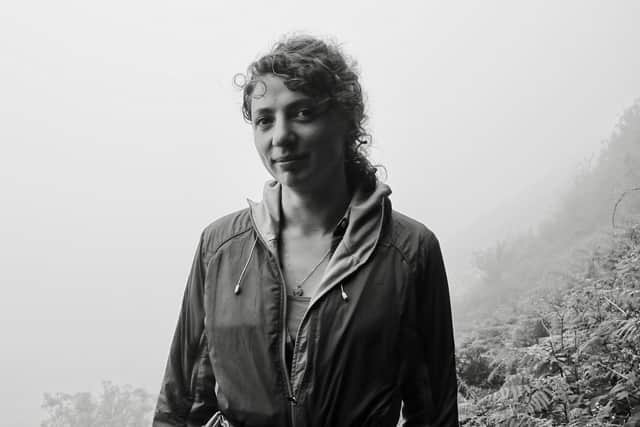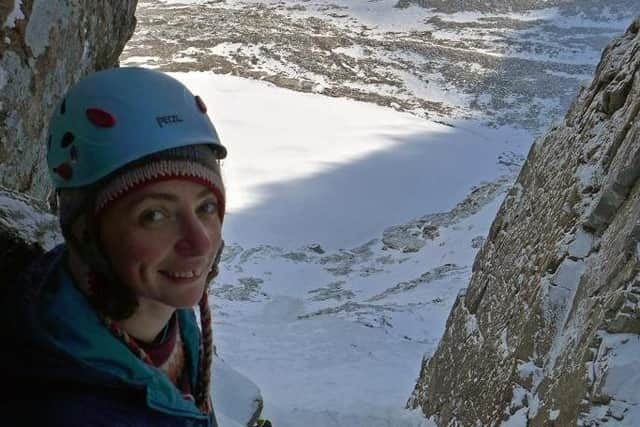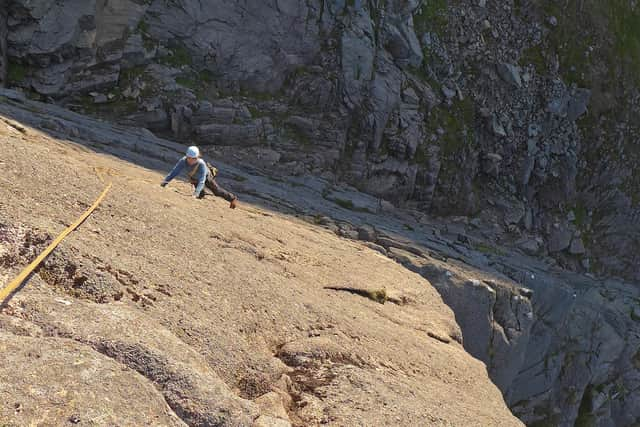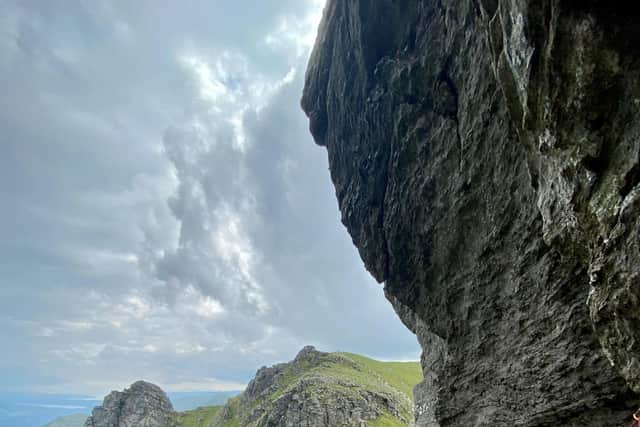Climber Anna Fleming on being as one with Cuillin and the Cairngorms for her new book Time on Rock
“I started indoors in about 2008 in an old church in Liverpool that had been converted into a climbing wall,” says Edinburgh-based author, Anna Fleming, 32. “It was still very much blokes in their fleeces with beards, and ale drinking. It was friendly but very masculine. Now I go into one of these new bouldering centres that have sprung up and proliferated. They didn’t exist when I first started. I’ll look around and it’ll be all women, apart from maybe one man and it’s mind boggling to see that level of change. It’s such a joy”.
Along with encouraging other women, this mountain leader and nature writer hopes that her new book Time on Rock: A Climber’s Route into the Mountains, will change the perception that climbing is all about conquering and bagging.
Advertisement
Hide AdAdvertisement
Hide AdIt encourages readers to consider this activity as a way to completely immerse themselves in nature.


On the book’s cover, Fleming is compared to Scottish writer, Nan Shepherd, who wrote memoir, The Living Mountain, though she also cites author Gwen Moffat as an inspiration.
In common with those authors, Time on Rock covers the author’s personal experience of climbing.
As well as chapters that cover Yorkshire, the Peak District and the Lake District, there’s the Cairngorms, Moray and Cuillin, which appears in all its intimidatingly misty and gabbro grey glory on the front cover.
Fleming writes,”The chapters follow my route around the UK in my twenties. In this period, my life took a Northerly trend, leading from Wales to Liverpool, Yorkshire and Cumbria, and then over the border to Scotland”.


The book is sensorial in its descriptions of the feel of rock, like Moray’s Hopeman sandstone and its “bubbles, pockets, holes and dimples”. It reveals that this material, as well as being used in the construction of the National Museum of Scotland, was shipped to build parts of La Sagrada Familia in Barcelona.
Along with the geology and her gradual accumulation of skills, Fleming describes the fossils she discovers, as well as plants, which include cloudberries in the Cairngorms, and other life that thrives in these sometimes otherworldly environments. She also describes the intense pleasure that a climber finds in solving puzzles and feeling time “warp” as they work their way up a mountain.
Although Fleming has always written on a freelance basis, she had the idea for the book while working as education and inclusion officer for the Cairngorms National Park Authority.
Advertisement
Hide AdAdvertisement
Hide Ad“It was 2018 when I was living there”, she says. “I started to have a sense of that conversation a climber can have with rock and that was when it shifted for me. It was through realising that intensity of connection between my physical body, my senses and the rocks that I thought this would be something worth writing about. I’ve always been quite keen on nature writing. Roger Deacon has written Waterlog for wild swimming, but there’s been no book like that about rock climbing and how it can bring you into that very close sensory relationship with the landscape”.


The book is so detailed that it’s almost cinematic. Perhaps it’s the adrenaline or the concentration required that sears the minutiae of each climb into Fleming’s brain. She didn’t have time to take actual notes, as there’s not much opportunity while you’re in the middle of an expedition.
“I have quite a good memory. I worked a bit from photographs and listened to a lot of music,” says this climber, who hopes to head to the Alps next. “I was keen to capture the movement and the rhythm of the climb, to really give that sense of doing that passage up the rock face, but I knew it had to be accurate as I know how particular the climbing community is. If I described a route wrong, I’d get plenty of feedback. It was a joy to relive those climbs and find a way to poetically recreate them on the page”.
While Fleming was writing about slate quarries for the Dinorwic chapter, she listened to Public Service Broadcasting’s album, Every Valley. The Kalymnos chapter, which covers Fleming’s climbs on this Greek island’s limestone rocks with friends, had a soundtrack of Primal Scream’s Screamadelica. “When I moved happily along the ridge, and was in the sunshine and rhythm, that was a lot of Fela Kuti” says Fleming of the Cuillin II: The Return chapter. She might have needed slightly more dramatic music - Wagner, say - for the book’s first Skye act, Cuillin I: The Epic.
Although there is little extreme drama in the book, as it’s not Touching the Void, Fleming did have a near miss while traversing this mountain for the first time.


“I was only 21 or 22, so very young and inexperienced. It’s such an amazing place and I remember seeing the ridge for the first time and thinking, ‘Oh my goodness, I’ve never seen anything like that’. I didn’t know that mountains like that could exist in the UK”, she says. “Things got quite tricky. I pulled a rock out and would have fallen and probably would have died, but my friend caught me and held me on the rope. That was very frightening, but it was also an amazing learning experience. I remember in the moments after that being freaked out and overwhelmed. To calmly look at the situation and hold myself together, that was a really powerful experience that stayed with me for years after. That sense of emotional strength, to be able to cope with something that frightening and manage it was very empowering”.
Time on Rock, £16.99 hardback, Canongate
A message from the Editor:
Thank you for reading this article. We're more reliant on your support than ever as the shift in consumer habits brought about by coronavirus impacts our advertisers.
If you haven't already, please consider supporting our trusted, fact-checked journalism by taking out a digital subscription.
Comments
Want to join the conversation? Please or to comment on this article.